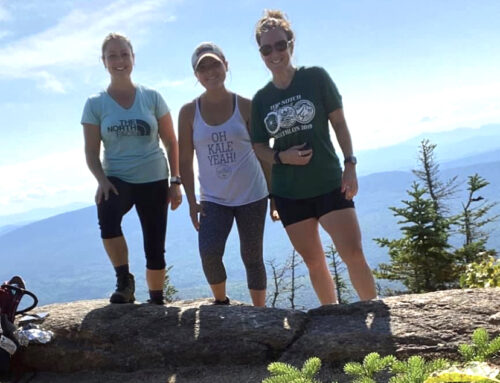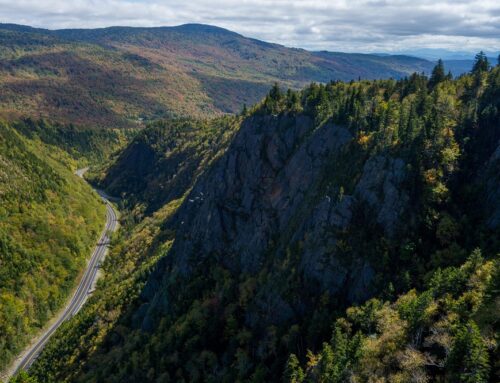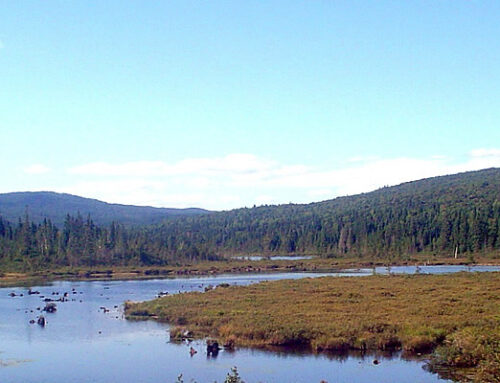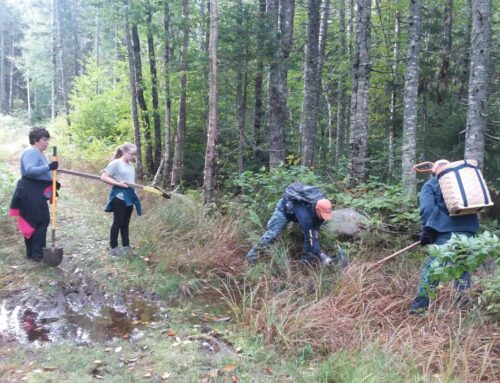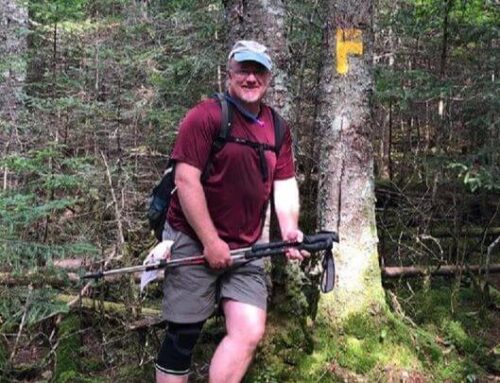By Kim Nilsen
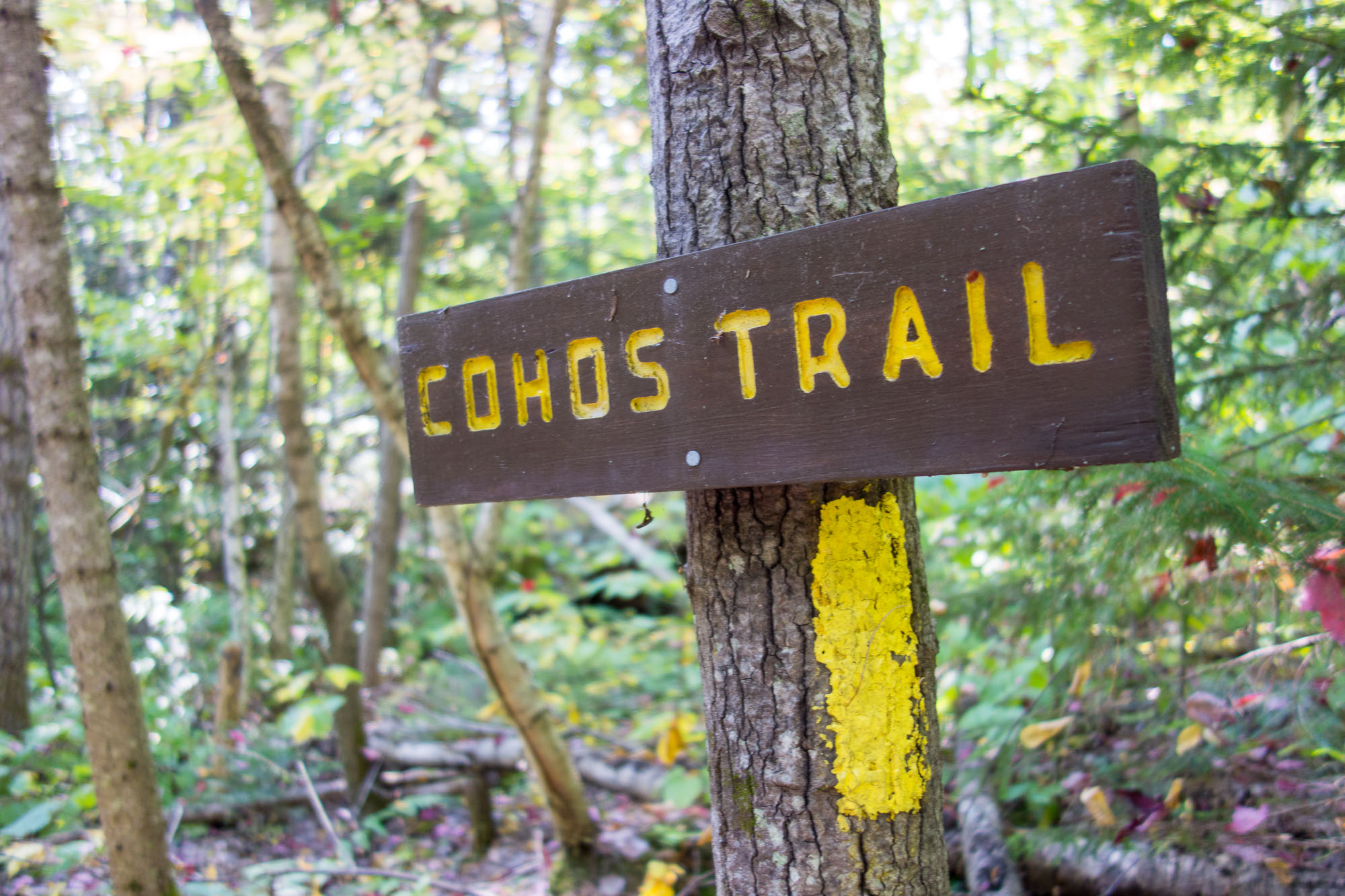
Photo courtesy of Kristin McLane
Each year we try to inform the Cohos Trail universe of potential trouble spots to watch for along the trail system between the Saco River in Harts Location to Fourth Connecticut Lake on the boundary with Canada. Here is a rundown of rough edges you may encounter out there in 2020, much of the problems confined to the southern quarter of the journey.
Davis Path
On the Davis Path between Giant Stairs and Mt. Davis, there are stretches where the spruce and fir are narrowing the route as branch tips stretch horizontally to take advantage of any sunlight filtering through.
Isolation Trail
The western leg of the Isolation Trail has been a challenge on and off for trekkers for two decades, but heavily erosive storms, including Hurricane Irene and intense tropical lows, have scoured the trail to the point where walking in water at times is assured and the footing is not ideal. Isolation Trail was rerouted a bit a decade ago, but increasing precipitation and outright deluges have conspired to cause washouts despite efforts by the Forest Service to modify the impact of bad weather.
Dry River Crossing
Never lose sight of the fact that Dry River is the most dangerous stream crossing on the Cohos Trail route. If you approach Dry River when the water is raging, think twice about attempting a crossing. Two people have died in that spot in the last 50 years, having been swept downstream. Best to retreat to the heights and make the big swing around the upper Dry River Wilderness on the northern Davis Path and Crawford Path above timberline, or at least move upstream a good distance to try to find a crossing where you can easily rock hop across.
Blowdowns in the Kilkenny
If you are hiking early in the season, before July 4th, you may encounter late fall blowdowns, as the North Country was hammered with high winds in November. The Kilkenny Ridge Trail, crippled several years ago by extensive tree damage, may very well present a challenge early on. Between Mt. Waumbek and Mt. Weeks, the ridges are highly exposed to severe winds funneling between the northern Presidential Range and the Crescent and Pliny Ranges. Wind speeds can easily reach hurricane force in that corridor, and the Kilkenny Ridge Trail in that environment is always the worse for it.
Pond Brook Crossing
The stream crossing at Pond Brook on the Pond Brook Falls Trail can be dicey if the water is exceptionally high. Move upstream to find a suitable spot, or descend on the Trio Ponds Road (if northbound) or down to the Nash Stream Road (if southbound) and walk to the intersection of those two roads and make the fairly short loop road walk to get around the troubled waters.
Bad Bridge in Dixville Notch
The bridge over a branch of Clear Stream in the Dixville Wayside (south side of Route 26 in Dixville Notch) has a broken stringer under the deck. Cross the stream on foot. That branch stream can be tricky in high water. Use caution.
High Grass
Some lengths of the Cohos Trail, particularly north of Route 26, are on old logging tote lanes or skidder paths, snowmobile corridors, and in logging cuts. Grasses grow in and dew forms readily to create wet going in the morning or anytime it rains. The best defense is to carry three or four changes of socks.
Bog Bridge Trail
On the Bog Bridge Trail, watch for and be cautious on a few broken puncheons in the large spruce barren near Coon Brook. A few segments have split.
Gadwah Notch Trail
In the Sims Stream Valley, at the lowest point between Gadwah Notch and Baldhead, within feet of a 90-degree turn in the trail where there is a rash of blue state blazing, there is a puncheon span over a low gully. If you are unsure about the strength of that span, simply drop down a few feet into the gully and climb up the other side. Better to do that than be on the logs if and when one of them fails. We need to replace this very remote span. When in doubt, don’t cross it.
Fourth Connecticut Lake
Until the puncheons are replaced at Fourth Connecticut Lake (this year most likely), take your time and take care making the circuit around the pond.
Hikers sometimes encounter wild animals on the trail, most usually moose and the occasional black bear. Simply keep your distance and move away slowly, particularly from bull moose in the fall, and do what is proper when cooking food and storing food overnight. In New England, it is safe to say that if you use common sense and common practices, you will have no trouble with and have little to fear from the wild things. You are more likely to have trouble with a Homo sapien than anything wild in New Hampshire. In fact, consider an occasional encounter with one of our bigger denizens of the forest your good fortune. You will be talking about the encounter to your grandchildren or old friends for a century.
Be safe and smart out there. Plan well if thru-hiking. And have a grand ole time on the mighty Cohos Trail.
